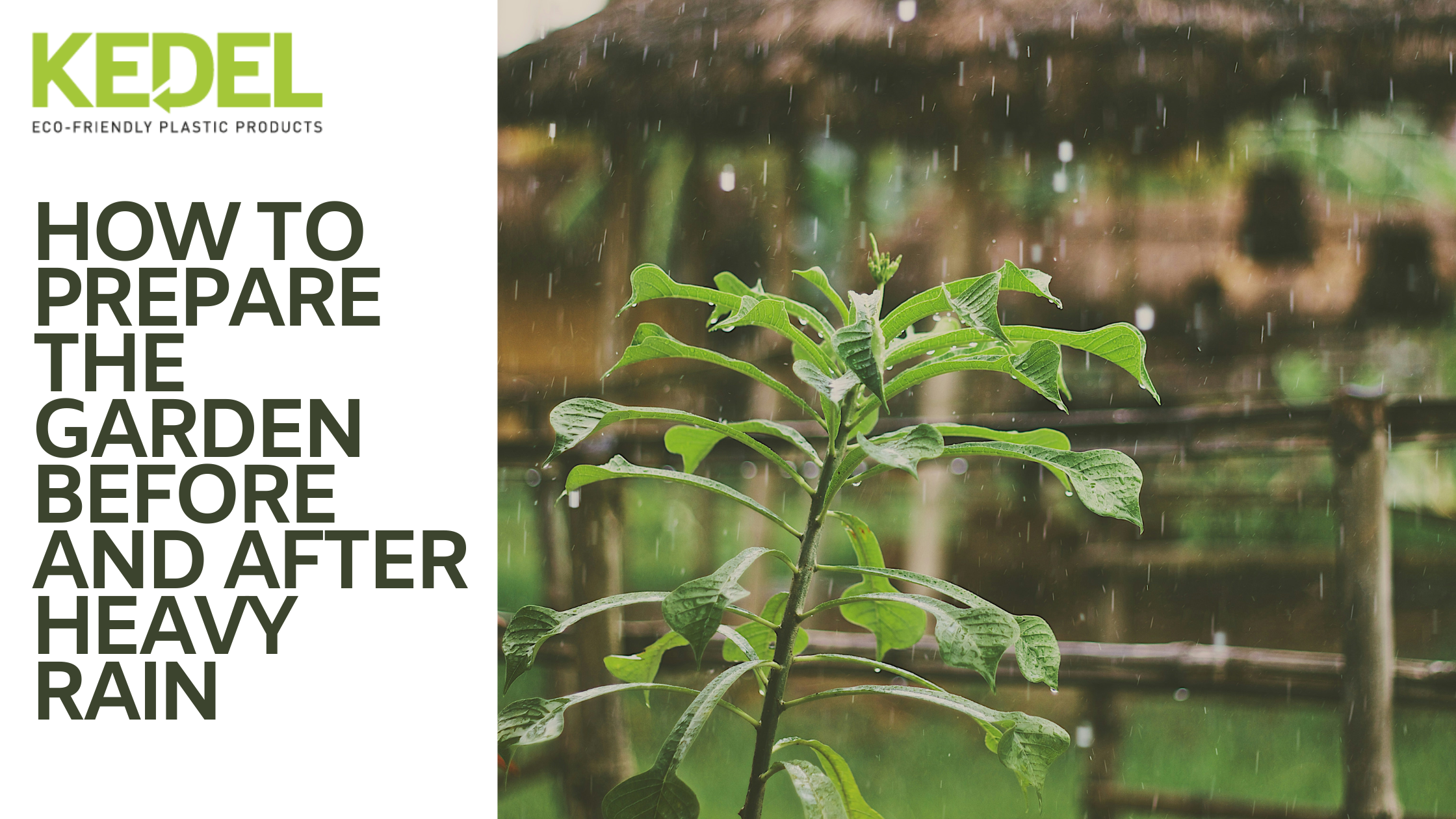How to Prepare the Garden Before and After Heavy Rain

It looks like we’re set for another classic British summer; think less BBQs in the sun and more huddling under an umbrella trying to keep our hot dogs dry! While we may not be able to take advantage of long sunny days, our gardens will benefit from the wet weather as long as we’re careful with our maintenance routines. In this blog, we’re going to look at how to prepare the garden before and after heavy rain, as well as the benefits of switching over to our recycled materials to make things that much easier!
Preparing the Garden Before Heavy Rain
Gardens are a sanctuary for many of us, offering a peaceful retreat and an opportunity to connect with nature. However, weather conditions, such as heavy rain, can pose significant challenges to maintaining a healthy and vibrant garden. Proper preparation can make a world of difference, not only protecting your plants but also preserving the overall structure and beauty of your garden. This guide will walk you through essential steps to prepare your garden before and after heavy rain, with a special emphasis on the advantages of using our recycled plastic products in the garden— materials that are both waterproof and require minimal maintenance!
- Check Drainage
Adequate drainage is crucial. Check that your garden has proper drainage channels to avoid waterlogging. Clear gutters, drains, and any water outlets to ensure that water can flow freely. Consider installing French drains or rain gardens to manage excessive water effectively.
- Apply Mulch
Applying mulch around your plants serves dual purposes: it helps retain soil moisture and prevents soil erosion during downpours. Organic mulches like wood chips or straw can be particularly effective. Ensure you apply mulch generously, but keep it away from the plant stems to prevent rot.
- Secure Plants and Structures
Stakes and ties can help keep taller plants upright in heavy wind and rain. Secure any loose garden structures, including trellises and garden furniture, to prevent damage or breakage.
- Aerate the Soil
Compacted soil can hinder proper drainage. Aerate your garden beds by either using a garden fork or a mechanical aerator. This step will allow water to penetrate the soil more effectively, preventing pooling on the surface.
- Prune and Remove Dead Plant Material
Trim off any dead or weakened branches from plants and trees to minimise the chances of breakage during heavy rain. This also improves air circulation, which can help prevent fungal diseases post-rain.
Caring for Your Garden After Heavy Rain
Heavy rain can have a profound impact on your garden, with both positive and negative consequences. While water is essential for plant growth, excessive rainfall can lead to a host of problems that can impact the health and aesthetics of your garden. Here are our top tips for caring for your garden after a heavy rain spell.
- Inspect for Damage
Once the heavy rain has subsided, inspect your garden for any signs of damage. Look for soil erosion, broken branches, or any structural damage to your fencing and decking.
- Check Drainage Areas
Even if you prepared your drainage systems beforehand, they might still need a check-up. Remove any debris that could be blocking the flow of water and ensure that standing water isn't collecting in undesirable areas.
- Assess Soil Conditions
Excess water can lead to compacted soil. If the ground appears compacted, aerate it once again to help the soil recover and allow the plant roots to breathe. Adding compost can help improve soil structure and drainage.
- Tend to Your Plants
After a heavy rain, check the condition of your plants. If the soil around them remains too wet, waterlogged plants might need to be moved to drier areas or replanted. Trim any damaged foliage or broken branches to prevent disease.
- Weed Control
Heavy rain can encourage weed growth. Post-rain is an excellent time to weed your garden as the soil is soft, making it easier to remove the weeds with their roots intact.
- Reapply Mulch
Check the mulch layer you applied before the rain. If it's been washed away or rearranged, add more mulch where necessary to keep your plants protected and help retain soil moisture as the garden begins to dry.
- Evaluate Decking and Fencing
Fortunately, if you use recycled plastic materials, you shouldn't find any damage here. However, it's good practice to give these structures a quick rinse and check for debris buildup.
Benefits of Recycled Plastic Decking and Fencing
Gardens with traditional wood structures require extensive ongoing care to prevent rot, mould, and insect damage, especially in wet conditions. This is where Kedel’s recycled plastic decking and fencing come to the rescue. If you have already switched over to recycled plastic garden products, you will already know how time-saving this material is. If you’re considering upgrading your current wood or metal garden structures, here are some of the benefits you can enjoy.
Waterproof and Weather-Resistant
Recycled plastic materials are inherently waterproof and do not absorb moisture. This reduces the risks of warping, rotting, and swelling, making them an ideal choice for garden structures subjected to unpredictable weather patterns.
Low Maintenance
Unlike wood, recycled plastic does not require regular painting, staining, or treatment. A simple wash with soapy water will keep your decking and fencing looking as good as new. This considerably reduces both the time and cost of garden maintenance.
Eco-Friendly
Utilising recycled plastic in your garden helps reduce plastic waste. It's a sustainable choice that supports the environment by reusing materials that would otherwise end up in landfills.
Durability
Recycled plastic is robust and long-lasting. It's resistant to insects, pests, and UV radiation, ensuring it maintains its integrity and appearance over many years.
Aesthetic Versatility
Available in a range of colours and textures, recycled plastic decking and fencing can closely mimic the appearance of wood or standard garden structures, allowing for versatile design options without compromising on aesthetics.
Heavy rain needn’t spell disaster for your garden. With thoughtful preparation and diligent care, your garden can thrive despite the weather. Moreover, utilising Kedel’s recycled plastic decking, fencing and outdoor furniture not only protects your garden from water-related damage but also offers a sustainable, low-maintenance solution that stands the test of time. So, as you gear up for the rainy season, give your garden the care it deserves and enjoy the lush, green oasis it remains, come rain or shine. To find out more about our recycled plastic materials and how we can help transform your outdoor space, get in touch with a member of the Kedel team today.

.png)

 100% Recycled Plastic
100% Recycled Plastic Will Never Rot
Will Never Rot 25 Year Guarantee
25 Year Guarantee Low Carbon Footprint
Low Carbon Footprint